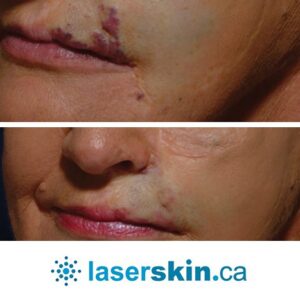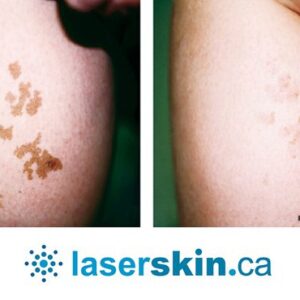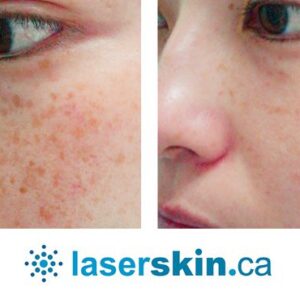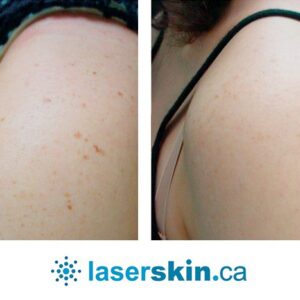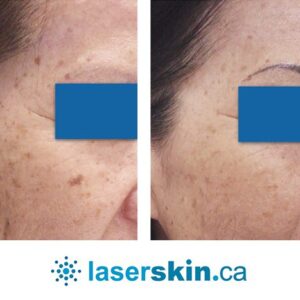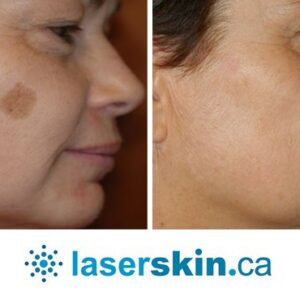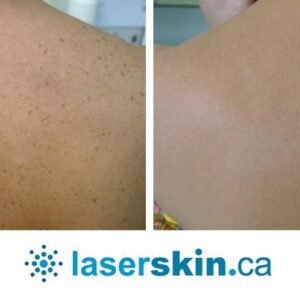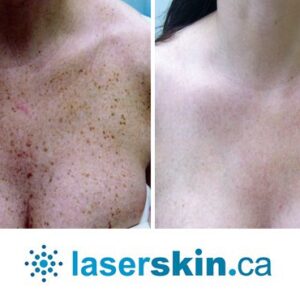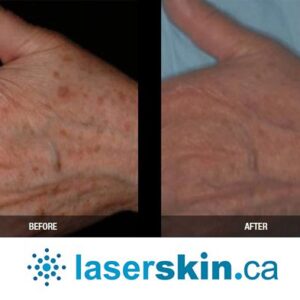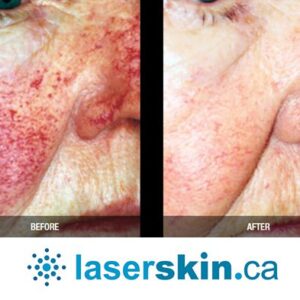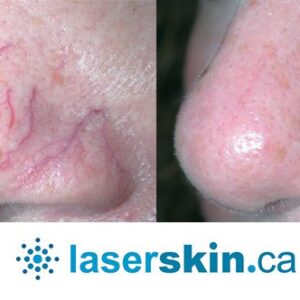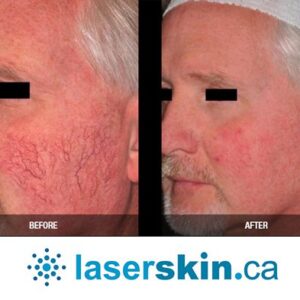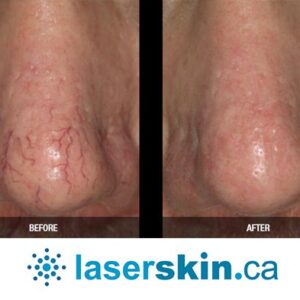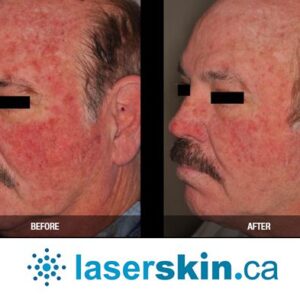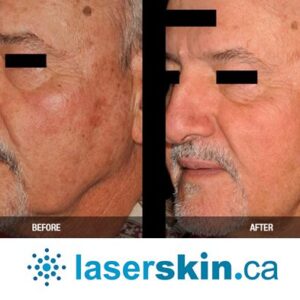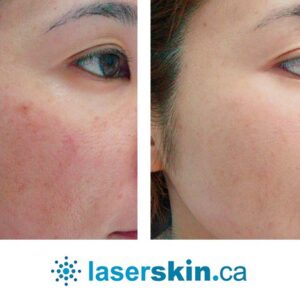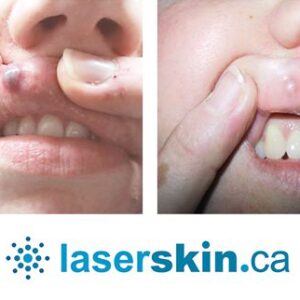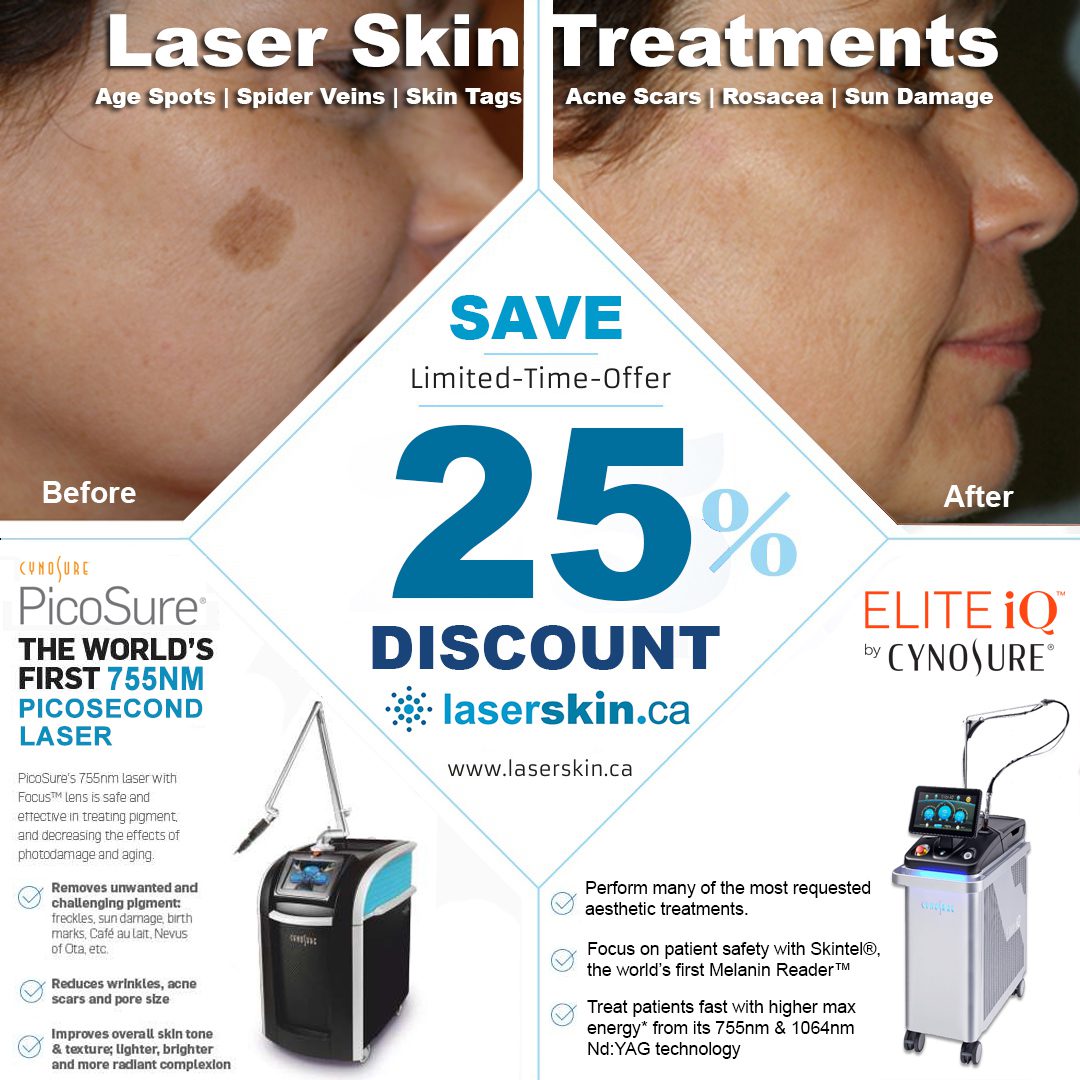
LASER TREATMENT FOR SPIDER VEINS ON LEGS

Varicose veins are enlarged twisted veins. Varicose veins can happen anywhere in the body but are more common in the legs. Many different lasers have been used to treat spider veins on legs.
Leg veins have been treated with the 595 nm pulsed dye laser22, mainly superficial telangiectatic vessels less than 1mm. Due to more extended penetration into the skin, the 755 nm long-pulsed Alexandrite laser and 1064 nm Nd: YAG laser have been used to treat leg veins more significantly than 1mm.
Our favourite laser for spider veins on legs is the 1064 nm long-pulsed Nd: YAG of the Cynosure Elite iQ. Single pulses are used, and the endpoint for this treatment is the immediate disappearance of the vessel.
spider veins on legs and Laser Vein Removal
Spider veins on legs are also known as Varicose Veins. Varicose veins are swollen blood vessels in the lower body that appear beneath the skin’s surface. Blood backs up in your veins when your vein walls are weak, and your valves aren’t working correctly.
This causes the blue and purple bulges on the legs, feet, and ankles. Several treatment options are available, but varicose veins can reappear.
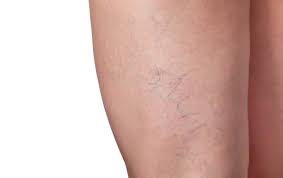
What are Spider veins and Laser Treatment for Leg Veins?
Varicose veins, also known as varicose or varicosities, occur when your veins become enlarged, dilated, and overfilled with blood. Varicose veins typically appear swollen and raised and are bluish-purple or red. Also, they are often painful.
The condition is prevalent, especially in women. Around 25 percent of all adults have varicose veins. In most cases, varicose veins appear on the lower legs.
What are varicose veins?
Varicose veins are twisted, bulging blood vessels that bulge just beneath the surface of your skin. These blue or purple bulges are most commonly found in the legs, feet, and ankles.
They might be uncomfortable or irritating. Spider veins are smaller red or purple lines near the skin’s surface and may surround varicose veins.
Varicose veins aren’t dangerous for most people, despite their appearance and discomfort. Severe varicose veins can sometimes lead to significant health issues like blood clots.
Most varicose vein symptoms can be relieved at home, or your doctor can treat them with injections, laser therapy, or surgery.
Who is likely to get spider veins on legs?
Spider veins on legs can affect anyone. Varicose veins are caused by a combination of conditions, including:
- Age: As we get older, our vein walls and valves stop working as well as they used to. Veins lose elasticity and become stiff.
- Gender: Female hormones can cause vein walls to stretch. Varicose veins are more common in pregnant women taking the birth control pill or going through menopause due to changes in hormone levels.
- Family history: This condition is heritable (runs in families).
- Long periods of standing or sitting reduce circulation. Wearing constrictive clothing, such as girdles or pants with tight waistbands, can reduce blood flow.
- Overall health: Certain medical conditions, such as severe constipation or tumours, increase vein pressure.
- Tobacco use: People who smoke are more likely to develop varicose veins.
Excess weight puts strain on blood vessels.
Causes of Spider veins on legs
Veins that aren’t working correctly cause spider veins on their legs. Blood cannot travel backward through veins because of one-way valves. When these valves fail, blood collects in the veins instead of flowing into the heart.
The veins widen as a result. Legs are frequently affected by varicose veins. Because those veins are the furthest from your heart, gravity makes it difficult for blood to move upward.
Some potential causes for leg veins may include:
- Pregnancy
- age over 50
- standing for long
- periods
- family history of varicose veins
- Menopause
- Obesity
How common are Leg veins?
Varicose veins are a common condition. Varicose veins affect approximately one-third of all adults. They are more common in females than in males.
Symptoms of varicose veins
Varicose veins are characterized by large, malformed veins that commonly appear on the legs. Over or around the enlarged veins, you may experience pain, swelling, heaviness, and achiness.
Swelling and discoloration may occur in some circumstances. Veins can bleed profusely, and ulcers can occur in extreme situations.
Diagnosing varicose veins
To diagnose varicose veins, your doctor will likely inspect your legs and visible veins while you’re seated or standing. They might inquire about any discomfort or symptoms you’re experiencing.
Your doctor may use an ultrasound to check your blood flow. High-frequency sound waves are used in this noninvasive diagnostic. It enables your doctor to examine the flow of blood in your veins.
Depending on the location, a venogram may be performed to analyze your veins further. Your doctor will inject a special dye into your legs and take X-rays of the area during this exam.
The dye appears on X-rays, allowing your doctor to see how your blood is flowing more clearly.
Ultrasounds and venograms can help rule out other issues like a blood clot or a blockage as the source of your leg pain and swelling.
Laser treatment for spider veins on legs
Endovenous laser treatment
Endovenous Laser varicose vein surgery is a technique that reduces varicose veins by using heat from a laser.
Varicose veins are swelling, bulging veins that most commonly affect the thighs and calves. A laser is a light-emitting device that emits a tiny beam of radiation.
Endovenous thermal ablation is best for treating leg veins. It is a relatively new technique that uses a laser or high-frequency radio waves to generate intense local heat in a varicose or incompetent vein.
To close the targeted vessel, heat is directed through a catheter. This treatment seals off the problematic veins while leaving them in place, resulting in minimal bleeding and bruising.
Endovenous thermal ablation, when compared to ligation and stripping, results in less pain and a faster return to normal activities, with comparable cosmetic results.
Simple laser treatment
A simple laser vein treatment is performed outside of your skin. It can be used to treat spider veins and small varicose veins that are just beneath the skin’s surface. More than one laser treatment is usually required.
As directed by your doctor, they are scheduled every 6 to 12 weeks. If the more prominent “feeder” vein has poor blood circulation, it must be treated first with surgery, endovenous laser or radio-frequency treatment, or sclerotherapy.
Outlook for people with Leg veins
Varicose veins typically get worse over time. This is true even if you make the necessary lifestyle changes to control them and manage your pain. While they may be unsightly, they usually don’t cause long-term medical problems.
In some cases, varicose veins can lead to ulcers or sores on your legs, blood clots, or chronic inflammation. If you have a severe chance, your veins could rupture. You should see your doctor if you develop any of these symptoms. They may suggest a more aggressive approach, such as surgery or other interventions.
What To Expect from Laser treatment
After the treatment, you can walk, and recovery will be quick. After simple laser treatment, you should be able to resume your regular daily routine.
After endovenous laser treatment, compression stockings will be worn for one week or more. Your doctor will use duplex ultrasonography to ensure the vein is completely closed.
Does laser work on leg veins?
Laser treatments can destroy the vein without damaging your skin. Small leg veins may disappear immediately after treatment. More significant leg varicose veins will darken, and you’ll likely see them for 1 to 3 months before they disappear. To get complete clearing, you may need three or more treatments.
Book Your Free Consultation Today Or Call (647) 560-9233
By providing your phone number you agree to receive informational text messages from laserskin.ca. Consent is not a condition of purchase. Message frequency will vary. Msg & data rates may apply. Reply HELP for help or STOP to cancel.
Laser spider veins on legs treatments in Toronto & Richmond Hill
